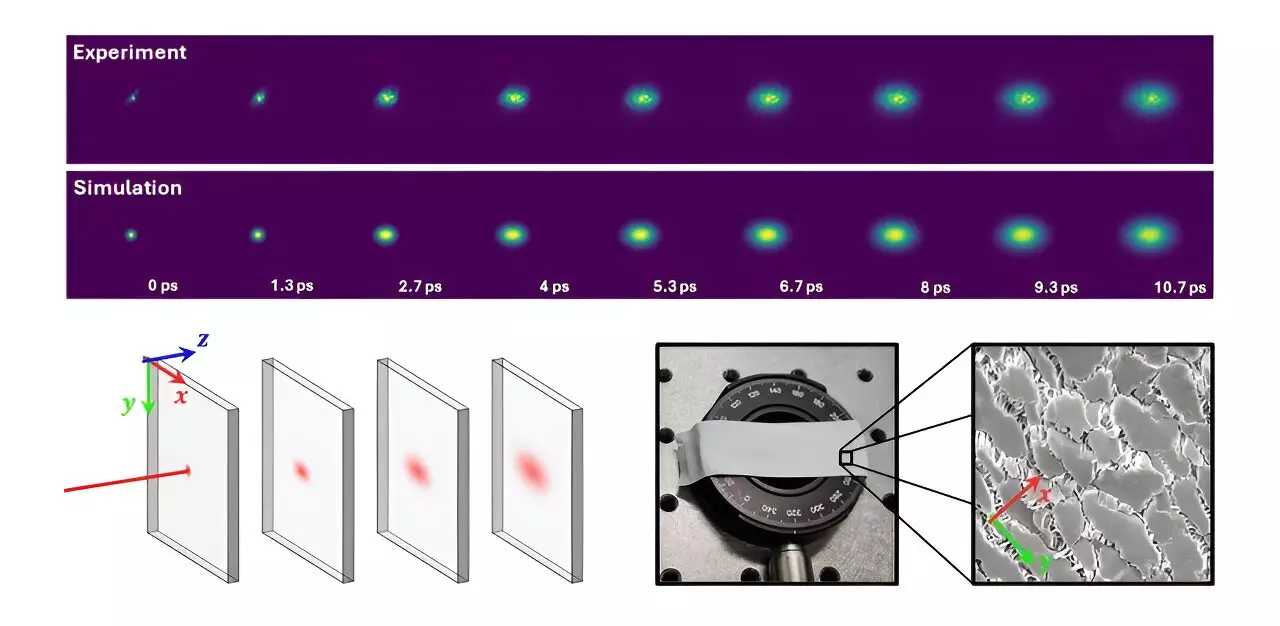Light is a fundamental element in various scientific disciplines, from the realms of medical diagnostics to advanced manufacturing processes. The way light interacts with different materials is crucial for applications ranging from imaging techniques to the production of sophisticated optical devices. However, the complex nature of materials frequently translates to directional discrepancies in how light scatters, a phenomenon termed anisotropy. This aspect complicates the measurement and modeling of optical properties, presenting a significant challenge for researchers. Historically, efforts to characterize these materials have been hampered by the intricacies of anisotropy, leading to oversimplified models that risk yielding inaccurate results.
Recent developments have brought to light a novel technique that promises to enhance our understanding of light’s behavior in anisotropic media. Researchers at the European Laboratory for Nonlinear Spectroscopy (LENS) have introduced a significant advancement in their recently published study in Advanced Photonics Nexus. By merging time-domain transmittance measurements with sophisticated Monte Carlo simulations, they have created a comprehensive method to analyze how light propagates within such materials. Their innovative approach enables scientists to capture the subtleties of light behavior, revealing patterns previously obscured by traditional methodologies.
The team focused on two representative anisotropic materials: Teflon tape and paper. Teflon, a ubiquitous industrial material valued for its unique properties, was selected alongside paper, which possesses inherent structural anisotropy due to the alignment of cellulose fibers. These materials are not only prevalent but offer real-world relevance that underpins the practical implications of the research findings.
In their experiments, the researchers employed transient imaging techniques to observe how light diffusion evolves over time when subjected to ultrashort light pulses. This state-of-the-art process allowed them to meticulously document the dynamic changes in the light patterns, providing a wealth of data that was subsequently analyzed through their new anisotropy-aware simulation framework. Remarkably, their findings demonstrated a marked directional variation in how light scattered across different axes in both Teflon and paper, unveiling the full scattering tensor coefficients for the first time.
Previously, the ability to extract such granular details about light scattering from structurally anisotropic materials has eluded scientists. The results obtained from this new method corroborated predictions from advanced simulations, further illustrating its effectiveness and accuracy. Such explicit detail not only enhances theoretical understanding but also highlights the critical importance of taking anisotropic properties into account during material analysis.
Dr. Lorenzo Pattelli, the study’s lead researcher from the Italian National Institute of Metrological Research (Istituto Nazionale di Ricerca Metrologica; INRiM), raised pertinent concerns regarding the longstanding oversight of anisotropy in material studies. By ignoring the anisotropic nature of scattering media, previous studies often operated under the assumption that materials behaved isotropically. This simplification has led to substantial inaccuracies in reported scattering coefficients, as acknowledged by Dr. Pattelli.
The implications of this research extend well beyond academic curiosity; they resonate throughout key scientific and industrial fields. The new methodology could revolutionize the characterization of complex biological tissues, which often display anisotropic behavior. Improved accuracy in diagnostic imaging, informed by these insights, could enhance the precision of medical evaluations and treatments. Similarly, in material science, this advanced understanding will pave the way for the development of improved materials and technologies across various applications, from optics to telecommunications.
The innovative technique developed by researchers at LENS marks a significant milestone in the analysis of anisotropic materials. By accurately modeling light’s behavior, we are on the brink of improved insights that could drive advancements in both medical and industrial fields. As we continue to unravel the complexities of light-matter interactions, this work serves as a reminder of the importance of precision and detail in scientific research—a step towards a more articulated understanding of the materials that shape our world.

